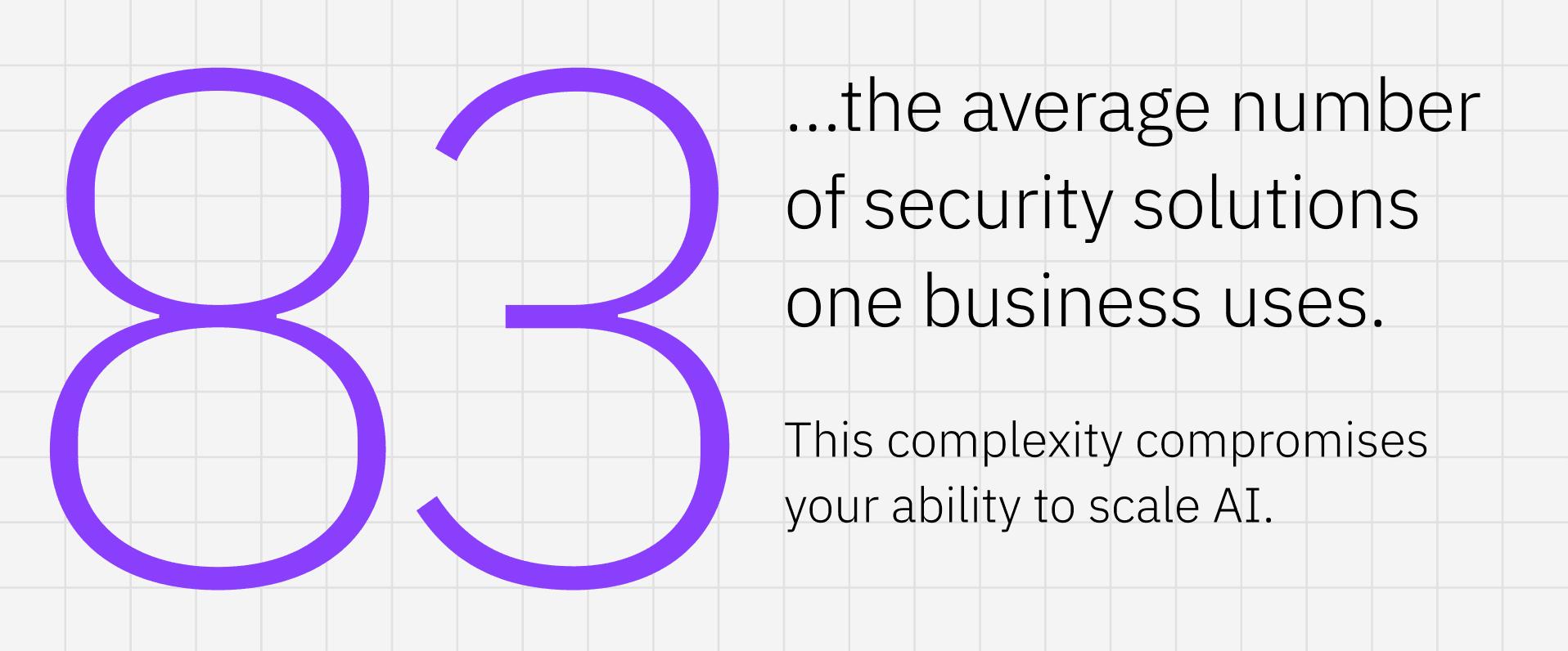 Lynne Murray | Director of Product Marketing for Data Security
More About This Author >
Lynne Murray | Director of Product Marketing for Data Security
More About This Author >
 Lynne Murray | Director of Product Marketing for Data Security
More About This Author >
Lynne Murray | Director of Product Marketing for Data Security
More About This Author >
Today’s organizations are drowning in the growth of many different cybersecurity tools—an unintended consequence of trying to keep up with an evolving threat landscape. Security tool sprawl has become the norm, when separate tools for each type of security task are cobbled together over time in an attempt to defend expanding networks. But now, could this fragmented approach be doing more harm than good?
According to a recent study conducted by IBM Institute of Business Value, organizations juggle an average of 83 different security solutions from 29 vendors. It’s unnecessary convolution and risk. More tools equal more threats; every integration is a potential point of entry for bad actors.

Source: IBM Institute of Business Value
A patchwork of disconnected point solutions creates dangerous vulnerabilities—many of them complete blind spots. In these environments, it’s not a matter of “if” a cyber event will happen, but "when." This creates a ripe environment for bad actors and Gen AI attacks to leapfrog existing defense systems.
What Does this Mean for Data-centric Security?
For these reasons, Omdia’s 2024 Decision Maker Survey shows that 82% of respondents changed their overall approach to data security in the past 12 months. Omdia’s research reveals that these changes involve addressing siloed tools and vendor consolidation.
Organizations using different tools throughout the organization to detect and contain threats are much less effective due to:
- Longer detection and response times
- Increased costs and operational strain
- Inconsistent policies and enforcement
- Greater potential for error and misconfiguration
- Poor audit and compliance readiness
As attacks grow faster and more sophisticated, relying on siloed, overlapping tools only increases risk. The operational burden is skyrocketing for organizations managing dozens of disparate interfaces, alerts, and reports.
Data Security Platformization: A Smarter Strategy
“Organizations are recognizing that relying exclusively on native cloud-based or legacy on-premises data protection systems, which are often siloed and lack the integration needed for rapid workflow processing is inadequate for defending against today’s advanced threat landscape,” according to Adam Strange, Principal Analyst, Omdia Research.
Instead, organizations can resolve the risk associated with tool sprawl with a data security platform. By consolidating fragmented tools into a single, unified ecosystem, a data security platform simplifies operations, strengthens protection, and improves visibility.
Per the Omdia report, the top reasons for moving towards a data security platform are:
- The need for scalability and flexibility (43%)
- Improvements in the total cost of ownership (40%)
- Better-centralized management (40%)
- The need to reduce complexity (37%)
Simplify, Clarify, and Strengthen
Fundamentally, security tool sprawl creates complexity, making it difficult to integrate and manage a multitude of tools effectively. In turn, this hinders cyber threat detection and mitigation, weakening an organization’s defenses.
In contrast, data security platformization embodies a “less is more” approach, establishing a streamlined, efficient platform using fewer components and providing centralized management and unified visibility across different attack vectors.
In data security, simplicity provides clarity. By reducing complexity, a data security platform creates a more defensible and more resilient cyber posture.
Easing the Security Talent Crunch
Complexity also impacts security teams. The gap in the global cybersecurity workforce is massive and growing, estimated in 2024 at 4 million professionals and increasing 19% year-over-year. Security tool sprawl increases the strain on these resources.
While executives are looking at specific spending areas of cybersecurity, Omdia’s research shows data security as one of the leading areas for investment in 2025. 73% of executives are expecting an estimated 15% increase in available budgets to fund new projects, a large proportion of which will be involving larger-scale platforms or integrated, multi-functional propositions.
A data security platform provides much-needed relief to overburdened security personnel who are in short supply, requiring fewer resources and less time for security operations and compliance controls.
Built for Scale: Flexibility and Agility
The data security landscape is constantly evolving, mandating a robust, future-forward solution. As such, the need for scalability and flexibility is the top reason for organizations’ adopting a data security platform.
Data protection must be scalable and future-ready, and fragmented controls cannot meet the needs of modern, hybrid infrastructure. An estimated 94% of all companies worldwide use cloud computing in their operations, making hybrid infrastructures the new and pervasive reality.
Omdia considers a data security platform critical to gaining visibility and control over data security, particularly in cloud environments. Control capabilities must be unified and strengthened for flexibility, scalability, and agility, seamlessly extending across on-premises and cloud environments.
Consistent Policies and Compliance
Data security platforms also help resources and organizations by unifying protection policies and enforcement across dissimilar controls. As such, platforms safeguard against errors and misconfiguration, making them a critical requirement for effective risk mitigation.
The 2025 Thales Data Threat Report found that policies and compliance matter greatly. A majority, 78%, of enterprises that failed audits had a breach history, versus just 21% of those that passed compliance.
Additionally, data security platforms serve organizations using hundreds of data stores and cloud repositories to reduce data breaches, data risks, and compliance incidents.
Why Data Security Platformization is a Strategic Imperative
Data security platforms secure data end-to-end across both on-premises and cloud-based data repositories. In data security, there is little room for error, misalignment, and misconfiguration--characteristics inherent in disparate security tools. A unified data security platform offers comprehensive insights into the “who, what, when, where, how, and should” aspects of data security, closing gaps that attackers exploit.
A data security platform combines critical functions such as data discovery and classification, policy definition and enforcement, key management, encryption, and tokenization and masking. This enables the aggregation of data protection requirements of an organization into a single solution and addresses gaps in both traditional data security approaches left by perimeter security and native data security approaches.
Future data protection lies in platformization, and real-world use cases consistently demonstrate its significant advantage over the prevalent alternative, security tool sprawl. It’s time. Organizations must adopt a unified, consistent, and wider-reaching approach to data security, ultimately enhancing organizational well-being.
Related Resources
Read the white paper: Future Proofing Your Data Security
Get your copy: Thales 2025 Data Threat Report
Learn more about: Thales Data Security Platform